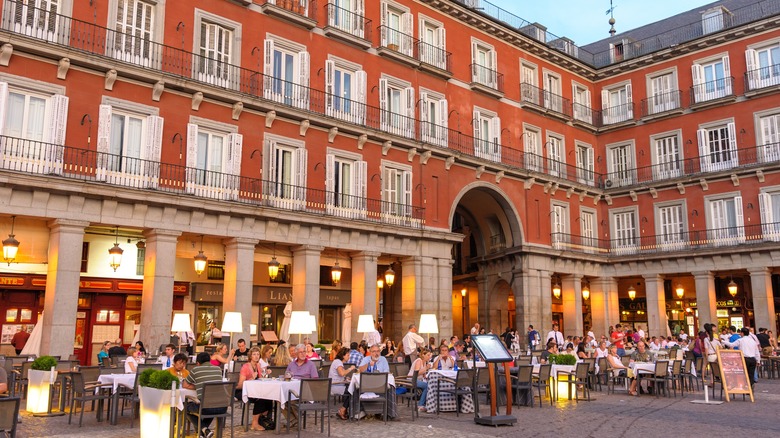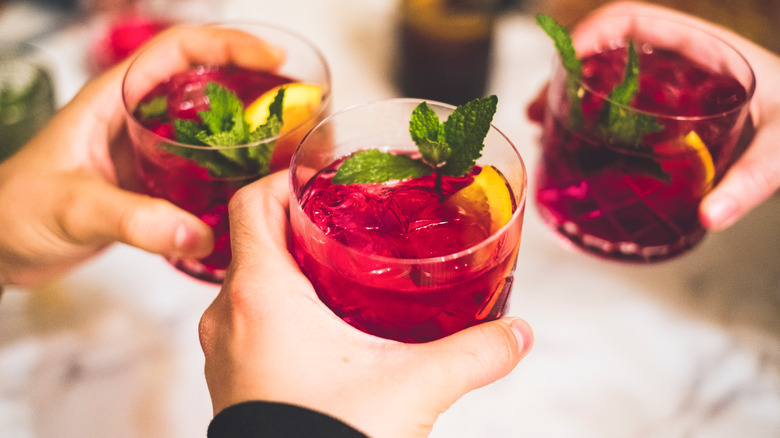Rick Steves Calls The Taste Of This Spanish Drink Whose Name Means Blood 'Deceptively Harmless'
If you've been to Spain, you may have sampled some wonderful wine varietals like tempranillo, rioja, or garnacha, which can be less common in the wine aisle than the likes of merlot or moscato. Perhaps you've been to Spain's best-kept secret wine region of Priorat or had some heavenly food and wine pairings in the Basque Country. However, you may not have had these delicious Spanish wines simply by the glass. You might have tried them in sangria, a drink that travel pro Rick Steves calls a "bloody good Spanish punch" on his website.
There's a good reason for what he says. Steves explains, "Bright red in color, it takes its name from the Spanish word sangre, which means 'blood.' The key ingredients are red wine and fruit. It's often spiked with something stronger to give it a kick." It's simply delicious, but that can be a bit of a trap for the unwary. Steves warns that "sangria's fruitiness can make it taste deceptively harmless until your head starts to spin. Pace yourself carefully until you've determined how much of a punch it packs."
If you're unfamiliar with sangria, it's usually made with a red wine varietal like rioja (though it doesn't have to be a Spanish red). You put in sliced fruits and berries, though Steves points out that you should make sure what you have in there is seedless. He also recommends citrus because, as he explains, "acidity tempers the sweetness." Sugar and soda water may also be added, as well as spices like cinnamon. Then, you can add other, harder alcohols like gin or vodka to make it even stronger or adjust the taste. Finally, you let it sit for a while so the fruit soaks up the alcohol.
All about sangria, different varieties, and why you should be careful drinking it
Adding fruit to wine has been around since the days of the Roman Empire when water wasn't particularly safe to drink. Sangria itself may have originated around the 14th century in the Caribbean or Ecuador, or it may have come from Spain. The origins are debated, but the European Union declared in 2014 that it can only be labeled as sangria if it's from Spain or Portugal. (It was introduced to the United States at the World's Fair in 1964.)
One thing to know if you're traveling around Spain is that sangria is considered a summer drink. If you see places offering it in the winter, they're likely trying to attract tourists, which may or may not concern you. You probably should sample it anyway, Rick Steves notes, as restaurants and bars often have unique recipes. If red wine isn't your thing, you can make it with white. You can also use sparkling wine or even non-alcoholic wine.
Sangria is refreshing and very sweet, depending on what you put in it. That's the danger — it may not taste particularly alcoholic, and if it's a hot day, it's easy to consume more than you mean to. Plus, you may not know if it's just wine in the sangria or if other alcohol(s) have been added. That said, contrary to some drinking lore, sweet drinks don't cause more hangovers. You might feel the effects of the sugar if your body is sensitive to it, but it's more likely that it just doesn't taste as strong. When Steves, who has given us some of the best travel tips out there, tells us to pace ourselves with sangria, it's a good idea to listen.

